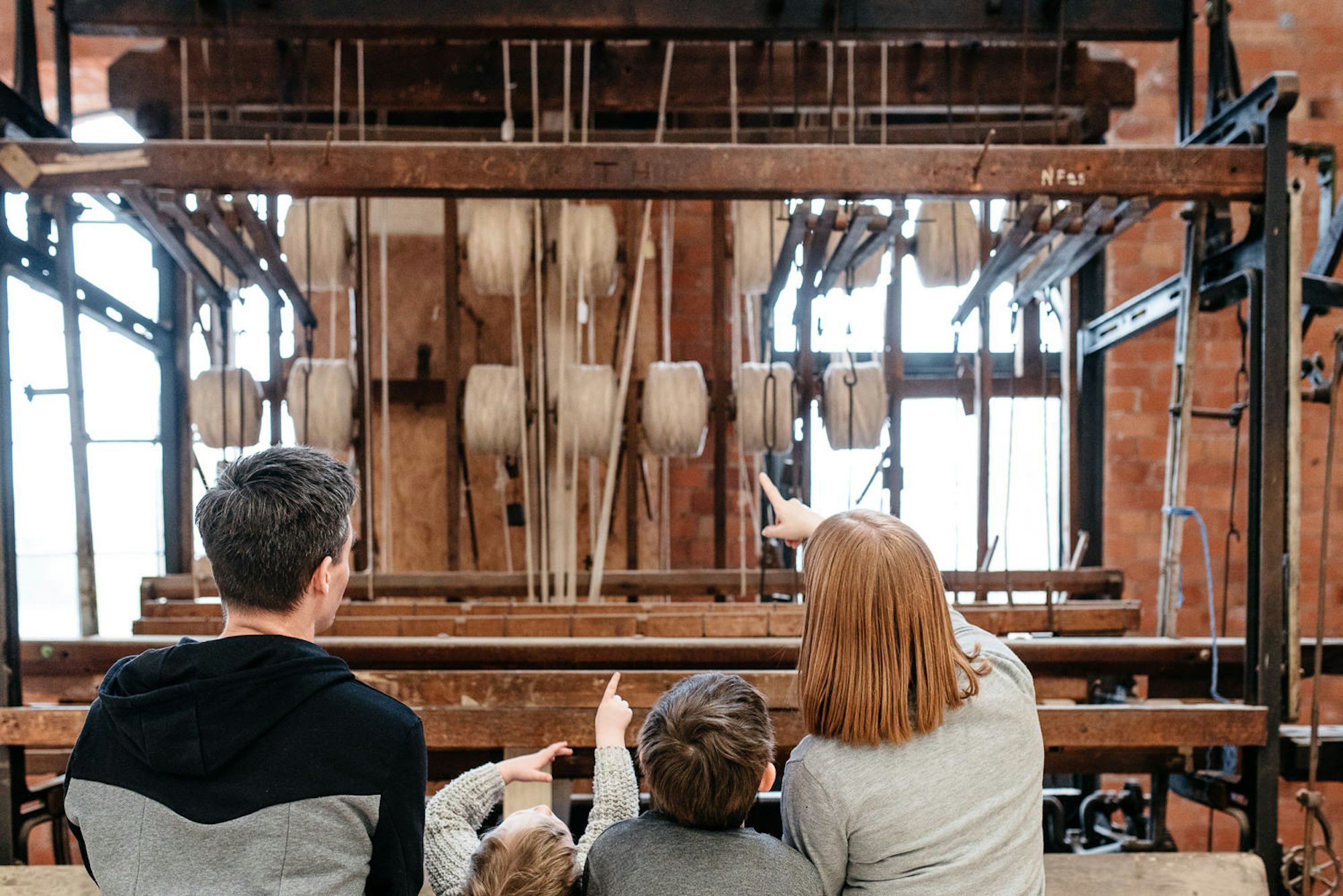Stories / How to guides /
Guide to Leather
An overview of the techniques, processes and designers working with leather.

This Guide to Leather was written by Roberta Knox
Leather is a natural material derived from animal skin through the process of tanning. It is breathable, flexible and warm, mainly used in upholstery and by the clothing and fashion industry to create footwear, garments and various bags and accessories.
The leather industry is amongst the oldest in existence. The tanning process has been used for centuries as a means to render animal skin a durable and versatile material; it prevents otherwise inevitable decay and putrefaction, and increases the flexibility and workability of the hide. Modern tanning techniques have been refined through scientific means, but the natural origin of the material gives it and the industry certain parameters and characteristics.

Leather is processed and sold in hides. As each animal is unique, so too each hide, varying in size, texture, etc. It is therefore not possible to buy leather by the metre (although in some cases it may be bought by the square foot). Whilst the modern tanning process allows for a greater degree of uniformity, any scars, veins and growth marks present in the raw animal skin will be in some way visible in the processed leather. The shade and grain of the leather will also vary across the hide due to variations in the pore structure of the animal skin (eg. the fibre texture will be much looser across the belly area of the hide than the backbone.) Often these unique markings are regarded as desirable, but techniques may be employed during the leather production process to minimalise their visual impact.

The type of animal skin used affects the characteristics of the leather produced. Goat leather is known to be particularly soft, for example, whilst leather produced from american horse hide is thick and tough. It is possible to tan any kind of animal skin - including fish, reptiles, even birds - although more unusual hides tend to be processed by specialist tanners only. Leather from cattle is the most commonly used, especially in the upholstery sector. As leather is generally a bi-product - animals are reared for meat, milk or wool rather than their skins alone - it must be born in mind that the price and supply of raw hide fluctuates depending on other markets. The price of bovine leather, for example, depends on the global demand for beef. Given the popularity of beef, bovine leather tends to have one of the most stable supply rates; a key reason for its dominance in the leather industry.
The tanning process is not uniform across tanneries. Each will use slightly different methods, material and timescales, but there are four main stages involved: preparation for tanning; tanning; re-tanning and finishing.

To begin with the raw hide is cured; it is either steeped in a saturated brine solution for up to two days, or salt is rubbed directly into the skin on both sides. This acts to preserve the hide on a short term basis until the tanning itself is undertaken. Following this, the hair and epidermis are removed (unless desired in the final material, in which case the tanning process will follow different methods to that described here). Traditionally this would have been carried out by treating the hide with urine, but lime and sodium sulphide are the agents used currently. This phase lasts one to two days. It causes the hide to swell and it begins to become softer and more flexible. Next the fat is removed from the back of the hide in a process named ‘fleshing’, and the hide is split into grain and flesh leathers.
The hide is then ready to be tanned. It is treated with a tanning agent. This reacts with the collagen in the animal skin, converting the protein of the hide into a more stable and durable material. There are three different types of tannages. Most tanning is carried out using minerals, the most commonly used of which is chromium sulphate. It acts very quickly on the leather, requiring only twenty four hours to complete the tanning process. The resulting leather is pale blue in colour and will produce a soft leather after the appropriate finishing techniques are applied. For a thicker, firmer leather (required to make belts and cases for example) vegetable tannins are used. Currently, mimosa tannins - which are extracted from the wattle tree - are the most utilised. They produce a brown leather. Finally, leather may be tanned using aldehydes and oils. This type of tanning creates very soft leather, which can be finished in such a way that renders the material washable and drycleanable.

Following the actual tanning, the leather goes through a process called ‘sammying’ which removes any excess water. It is often then ‘shaved’ in order to create a material with as uniform a thickness as possible. The leather is then ready for ‘retanning’. At this point different chemicals are added to the leather in a wet drum process in order to create the desired characteristics of the finished material. These include anti-mould chemicals, retan agents and fat liquors (these are required in order to imbue the final leather with a soft texture). Dyes of any colour may also be applied at this point, as well as other chemicals depending on the end use (flameproof agents, for example).


Following the retanning stage, the leather is dried. It is first passed through a mangle, then stretched and placed in a heating chamber. Once dry it is ready for finishing. Pigments and lacquer are applied which protect the final leather from wear. Sometimes a patina is also embossed into the leather in order to minimise the appearance of the natural marks, uneven grain and scars present in the raw hide. Finally the leather is ‘drummed’ to increase its softness; it is essentially placed in a large tumbler until the fibres begin to loosen.


Once tanned, the leather must be cut to the size and shape necessary for the product it will go on to make, a task that requires a level of expertise. Most leather produced is used by the fashion industry. Around half of all leather is utilised in the production of footwear and approximately a quarter goes into clothing and related accessories. About fifteen percent is taken by the upholstery sector, and the remainder is used to produce small leather consumer goods such as wallets, phone cases etc.


Leather goods can be sewn (generally requiring specialist equipment as opposed to a standard sewing machine) or moulded into shape. Leather that has been tanned using vegetable tannins is most suited to moulding. Both techniques are utilised in the production of footwear; a pattern is cut and stitched together, then the pieces are shaped around a ‘last’ (a foot shaped mould block) and baked into shape. Exact moulding methods vary, but wet moulding is the most common. The process involves soaking the leather in water prior to shaping it around a mould. The leather is then worked into the mould until dry, when it hardens into shape. It is also possible to boil leather once shaped around a mould in order to achieve a very rigid structure. This technique was commonly used in the sixteenth centuries to create armour and leather bottles, but has recently been revisited by several furniture and product designers; most notably Simon Hasan, whose critical study of leather manufacturing processes allowed him to create structurally sound furniture and vases made from moulded leather alone.
Various techniques may be applied to create patterns and designs on leather including embossing, embroidering, and increasingly laser engraving and laser cutting. Leatherworking is steeped in a long tradition, but there are a few designers attempting to innovate in the field. Lauren Bowker, who runs design studio The Unseen in London, created a series of leather pieces for this years London Fashion Week. The garments were coated with a heat sensitive ink; on contact with flames, the ink changed colour, with the leather taking on an irridescent blue-green sheen. Sruli Recht, an Icelandic fashion designer, experiments with a variety of unusual leathers and tanning methods in collaboration with a bespoke tanner. His work has included the impregnating of lambs leather with aluminium and the creation of objects from small pieces of his own tanned skin.
You can find four companies within the MakeWorks directory that specialise in leather production and finishing:
Andrew Muirhead & Son are a Glasgow based tannery, who dye, finish and cut leather in house. They specialise in the production of flame resistant and low toxicity leathers for the aviation industry, and in supplying and cutting to pattern leather for upholstery across the transport sector, but will take short run orders (ie. they are willing to sell individual hides.) They are a subsidury of Scottish Leather Group Ltd, a family owned business that is the largest manufacturer of leather in the United Kingdom.
Skyeskyns are a bespoke tannery on the Isle of Skye. They specialise in the production of high quality fleece-on lambskins, usually made for the interior design sector, but will tan any small animal skin requested.
Aero Leather Clothing, located in Galashiels, create high grade leather jackets and garments in short and medium runs. They take commissions for bespoke pieces and restorations, and often collaborate with other clothing firms and wardrobe departments for film and television.
Journeyman Leather, run by Jo Tonkinson in Sandness, make bespoke leather pieces by appointment - including saddlery, bags and belts - using traditional leather working techniques.
If you've enjoyed reading this Guide to Leather, find out more about textiles production by reading our Guide to Digital Fabric Printing
Categories
How to guides
Related stories
Guide to Printmaking
Guide to Ceramics
Guide to Jewellery production
Guide to Ceramics - part two
Guide to 3D Printing



